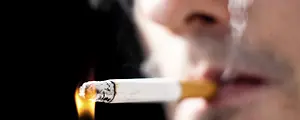RESEARCH TRIANGLE PARK, N.C. – According to research by RTI International, the first federally funded youth tobacco education campaign, The Real Cost, prevented nearly 350,000 youth aged 11 to 18 nationwide from initiating smoking from 2014 to 2016.
In February 2014, the U.S. Food and Drug Administration launched The Real Cost, which was designed to prevent the initiation of cigarette smoking among youth who have never smoked and to discourage further smoking among youth who have previously experimented with smoking. Since February 2014, the campaign has aired tobacco education advertising designed for youths aged 12–17 years on national television, radio, the Internet, and out-of-home displays, as well as in magazines and at movie theatres.
“Our study collected data from more than 5,000 youth in 75 media markets across the country,” said Matthew Farrelly, Ph.D., senior director of RTI’s Center for Health Policy Science and Tobacco Research and the study’s lead author. “By tracking changes in youth smoking behavior over time and their exposure to The Real Cost, we were able to show that frequent exposure to the campaign was correlated with lower smoking initiation. Specifically, the research found that high levels of exposure to campaign messaging were associated with a 30 percent decrease in the risk of smoking initiation among youth aged 11 to 18.”
The central theme of campaign is “Every cigarette costs you something.” In the first three years of advertising, campaign themes focused on the cosmetic effects of smoking, loss of control due to addiction, and the dangerous mix of toxic chemicals in cigarette smoke.
Previously, RTI-led research indicated that almost 9 in 10 youth reported seeing The Real Cost advertisements within seven months of the launch of the campaign, and the campaign positively influenced tobacco-related risk perceptions and beliefs specific to tobacco after 15 months.
This study supports other RTI previous research that found targeted mass media campaigns, delivered with sufficient intensity and duration, can decrease smoking initiation and prevalence.
“Preventing nearly 350,000 youth from smoking can lead to lower rates of smoking-related disease and death in the future and decreased health care costs, which is not only incredibly impactful to public health but beneficial to each and every teen who didn’t become an addicted smoker,” said Mitch Zeller, J.D., director of the FDA’s Center for Tobacco products. “These results prove that sustained, federally funded tobacco education campaigns can be influential in encouraging kids to rethink their relationship with tobacco.”

- The first federally funded youth tobacco education campaign, The Real Cost, prevented nearly 350,000 youth aged 11 to 18 nationwide from initiating smoking from 2014 to 2016
- The campaign has aired tobacco education advertising designed for youths aged 12–17 years on national television, radio, the Internet, and out-of-home displays
- This study supports other RTI previous research that found targeted mass media campaigns, delivered with sufficient intensity and duration, can decrease smoking initiation and prevalence
To request an interview, contact our Media Relations team.